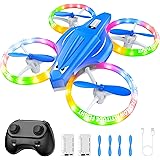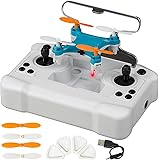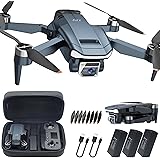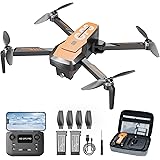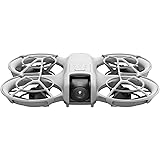The world of multi-rotor aircraft is dynamic. Building a stable and maneuverable drone presents unique challenges. Many hobbyists seek superior flight experiences. They want robust designs. The video above showcases an initial test flight. It features a custom-built Twin Tricopter (TT). This aircraft demonstrates remarkable stability. It handles gusty wind conditions with ease.
This article dives deeper. We explore the intricacies of the Twin Tricopter. We discuss its unique design. We cover its flight characteristics. You will learn about tuning for optimal performance. We also examine essential components. This information will help you understand the TT’s capabilities.
Understanding the Twin Tricopter Configuration
Tricopters offer distinct advantages. They differ from common quadcopters. A tricopter uses three motors. Two motors are usually at the front. One motor is located at the rear. This rear motor often pivots. A servo controls its angle. This mechanism provides yaw control. Quadcopters use differential thrust. This allows for yaw. Tricopters use mechanical yaw. This setup offers precise control. It often feels more natural to pilots.
The Twin Tricopter takes this further. It features two front arms. These likely carry two motors each. The rear arm has one motor. This design enhances stability. It also boosts lifting power. The video shows this in action. The TT performs well. It maintains a very stable attitude. This is true even in difficult winds. This structural choice contributes greatly. It improves overall flight dynamics.
Achieving Rock-Solid Stability in Gusty Winds
Flying multi-rotors in wind is tough. Wind creates turbulence. It pushes aircraft off course. The video highlights a significant challenge. Wind speeds were steady at 10 mph. Gusts reached 20-25 mph. These are strong conditions. Many drones would struggle. They might wobble excessively. The Twin Tricopter performed differently. It remained “rock solid.” It barely wobbled.
This stability comes from several factors. Careful tuning is paramount. The pilot mentioned tuning the TT. It was set to a “milder side.” This implies adjustments were made. PID controllers were likely tweaked. Proportional, Integral, and Derivative gains affect flight. They dictate how the drone responds. A “wild” drone is over-tuned. It reacts too quickly. A “mild” tune is more forgiving. It allows for smoother corrections. This helps manage wind effects. It ensures a smoother flight experience.
The Art of Tricopter Tuning
Tuning a tricopter is critical. It ensures stable flight. It optimizes maneuverability. PID values are adjusted. These settings control motor response. Incorrect PID values lead to issues. The drone might oscillate. It might drift. It could even become uncontrollable. Achieving a “milder” tune often involves reducing P-gain. This makes controls less sensitive. It calms twitchy reactions. This is especially useful for initial flights. It helps when dealing with unpredictable wind conditions. An intermediate pilot understands these nuances. They know how to fine-tune their aircraft.
Powering Performance: Battery and Throttle Management
The Twin Tricopter uses specific power. It runs on a 3S, 20C battery. This indicates its power source. ‘3S’ means three cells in series. This provides a nominal 11.1 volts. ’20C’ refers to the discharge rate. It can supply 20 times its capacity in amps. This is ample power for flight. It supports powerful motors. These components are well-matched. They provide good performance. The pilot only used 75% throttle. This is an important detail. It shows significant power reserves. The TT has plenty of lift. It can handle more payload. Or it can fly more aggressively. This headroom is valuable. It indicates efficient design. It suggests good motor and propeller selection. This contributes to efficiency and extended flight times.
Proper battery selection matters. It impacts flight duration. It affects power delivery. A 3S LiPo battery is common. It offers a good balance. It provides power and weight. The 20C discharge rate is also key. It ensures motors receive enough current. This prevents voltage sag. Voltage sag reduces performance. It can shorten battery life. Using only 75% throttle is efficient. It reduces stress on components. It also conserves battery energy.
Structural Integrity and Design Insights
A minor structural issue arose. The pilot noted the tail turning sharply. It rubbed against the wooden frame. This is a common early build snag. It highlights design considerations. Frame rigidity is crucial. Clearances are also important. The tail motor assembly moves. It needs ample space. A robust frame prevents flex. Flex can introduce vibrations. These vibrations interfere with flight controllers. They degrade performance. Wood frames are good for prototyping. They are easy to modify. However, carbon fiber frames are stiffer. They are more durable. They offer higher performance. Addressing such minor issues early is smart. It prevents more significant problems later.
Careful construction is essential. Every part must align correctly. The frame provides the backbone. It supports all components. Motor mounts must be secure. They must prevent movement. The tail assembly must move freely. Binding can cause control loss. It can lead to crashes. Ensuring proper clearances is vital. This prevents friction. It prolongs component life. It also ensures safe operation of the Twin Tricopter.
Flight Controllers: The Brain of the Tricopter
The Twin Tricopter uses a KK2 board. This is a popular flight controller. It is known for its simplicity. It offers an easy-to-use interface. Many hobbyists use it. The pilot expressed a wish. He wanted a magnometer on the KK2. A magnometer detects magnetic fields. It acts like a compass. It provides heading information. This sensor is crucial. It enables advanced flight modes. It allows for accurate GPS position hold. Without one, heading must be maintained manually. This makes flight more challenging. It limits autonomous capabilities. Modern flight controllers often include magnetometers. They integrate GPS for navigation. This provides a much richer feature set. It enhances overall drone functionality.
The KK2 board excels in its niche. It is a capable entry-level controller. It handles basic flight very well. However, advanced features need more sensors. A magnometer is one such sensor. It allows the drone to know its orientation. This is relative to the earth’s magnetic north. This is vital for consistent flight paths. It aids in waypoint navigation. The absence of this feature means the pilot works harder. They continuously correct the Twin Tricopter’s yaw. This shows the pilot’s skill. It also highlights the KK2’s limitations for advanced tasks.


